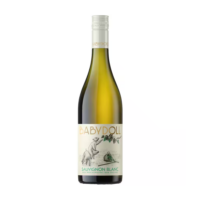Single Malt vs Blended Scotch Whisky: What’s the Real Difference?

Scotch Whisky is a drink steeped in history, craftsmanship, and complexity. For enthusiasts and beginners alike, one question often arises: What is the difference between Single Malt and Blended Scotch Whisky? While both types originate from Scotland and share a love for rich flavor, they differ in production, ingredients, and taste profiles. In this article, we'll break down these differences, helping you understand what sets each apart and how to choose the right Scotch Whisky for your taste.
What is Scotch Whisky?
Before diving into the comparison, it’s essential to understand what qualifies as Scotch Whisky. Simply put, Scotch Whisky (or Scotch) is whisky made in Scotland from malted barley, water, and yeast. It must be aged in oak barrels for at least three years and contain no additives other than water and caramel coloring.
There are five types of Scotch Whisky:
Single Malt
Single Grain
Blended Malt
Blended Grain
Blended Scotch Whisky
But the most popular and widely debated are Single Malt and Blended Scotch Whisky.
What is Single Malt Scotch Whisky?
Made at One Distillery
Single Malt Scotch Whisky is produced from 100% malted barley and distilled at a single distillery. Despite what many assume, "single" doesn’t mean it comes from one barrel or one batch—it simply refers to the distillery.
Famous single malt brands include:
Glenfiddich
The Macallan
Glenlivet
These whiskies often carry a distinct identity and flavor based on their region, water source, and distillation methods.
Taste Profile
Single malt Scotch is known for:
Rich, complex flavors
More pronounced character
Unique notes like smoke, fruit, vanilla, or peat
Each bottle often reflects the signature style of its distillery.
What is Blended Scotch Whisky?
A Blend of Whiskies
Blended Scotch Whisky is made by combining one or more single malt whiskies with one or more single grain whiskies. The goal is to create a balanced, smooth product that appeals to a wider audience.
Popular blended whisky brands include:
Johnnie Walker
Chivas Regal
Ballantine’s
Taste Profile
Blended whiskies are known for:
Smooth, approachable flavor
Consistency across bottles
Subtle complexity with balanced notes
They are often a great entry point for those new to whisky.
Key Differences Between Single Malt and Blended Scotch Whisky
Feature
Single Malt
Blended Scotch Whisky
Ingredients
100% malted barley
Mix of malt and grain whiskies
Production
One distillery
Multiple distilleries
Taste
Complex, distinct, bold
Smooth, mild, balanced
Price
Generally more expensive
More affordable
Audience
Whisky connoisseurs
Casual drinkers and new enthusiasts
Which One Should You Choose?
Choosing between Single Malt and Blended Scotch Whisky depends on your taste preferences, budget, and experience.
When to Choose Single Malt
Go for Single Malt if:
You enjoy intense and unique flavors
You’re a whisky enthusiast or collector
You want to explore regional profiles like Islay, Speyside, or Highlands
When to Choose Blended Scotch
Blended Scotch is perfect if:
You’re new to whisky
You want a smooth, drinkable spirit
You're mixing whisky in cocktails or highballs
The Role of an Alcohol Store in Your Whisky Journey
Whether you're buying your first bottle or expanding your collection, a reliable Alcohol Store can make a huge difference. Here’s how:
Expert Guidance
Knowledgeable staff can help you understand flavor profiles and suggest options based on your taste and budget.
Variety of Options
A good alcohol store carries a wide range of Scotch Whisky options, including both single malts and blends, rare bottles, and special editions.
Tasting Events
Many stores offer whisky tasting events, allowing you to sample different types before making a purchase.
Myths About Scotch Whisky
There are many misconceptions when it comes to whisky. Let’s bust a few:
Myth: Single malts are always better than blends.Truth: Many blended Scotch whiskies are award-winning and crafted by expert blenders for consistent quality.
Myth: Blended whisky is only for mixing.Truth: Some blends are best enjoyed neat or on the rocks.
Myth: Older whisky is always better.Truth: Age doesn’t always mean better; younger whiskies can offer fresh, vibrant flavors.
How to Store and Enjoy Your Scotch Whisky
Storing
Keep bottles upright to avoid cork damage.
Store in a cool, dark place.
Avoid temperature fluctuations.
Serving
Try it neat first to appreciate the flavor.
Add a few drops of water to open up aromas.
Use a whisky glass or Glencairn glass for best experience.
Final Thoughts
The debate between Single Malt vs Blended Scotch Whisky comes down to personal preference. Single malts offer deep, complex flavors, perfect for savoring slowly. Blended whiskies, on the other hand, provide smooth, versatile options ideal for social occasions or mixed drinks.
Whether you’re just getting into Scotch Whisky or already a seasoned collector, both styles have something unique to offer. Visit a trusted Alcohol Store to explore different brands, ask questions, and discover your favorite dram.










